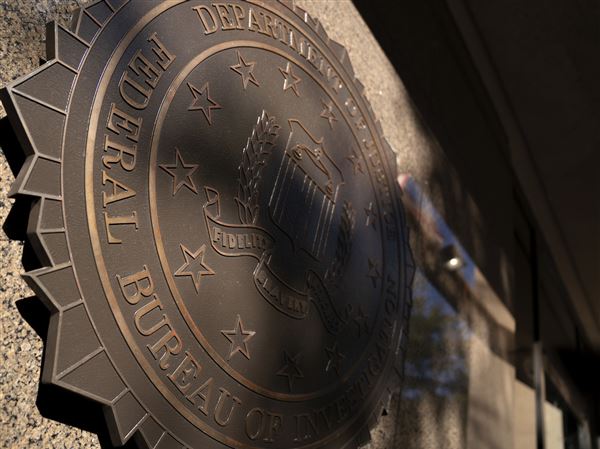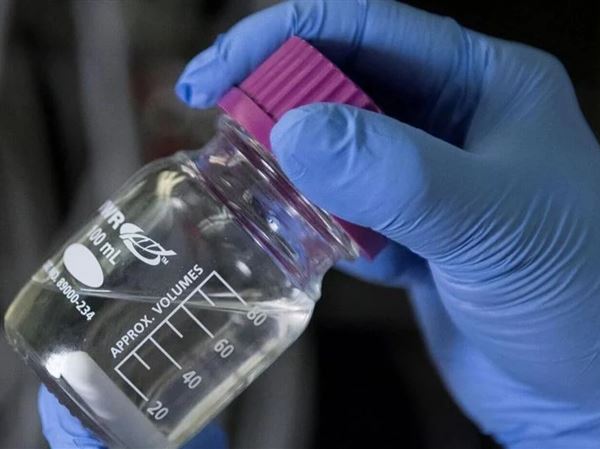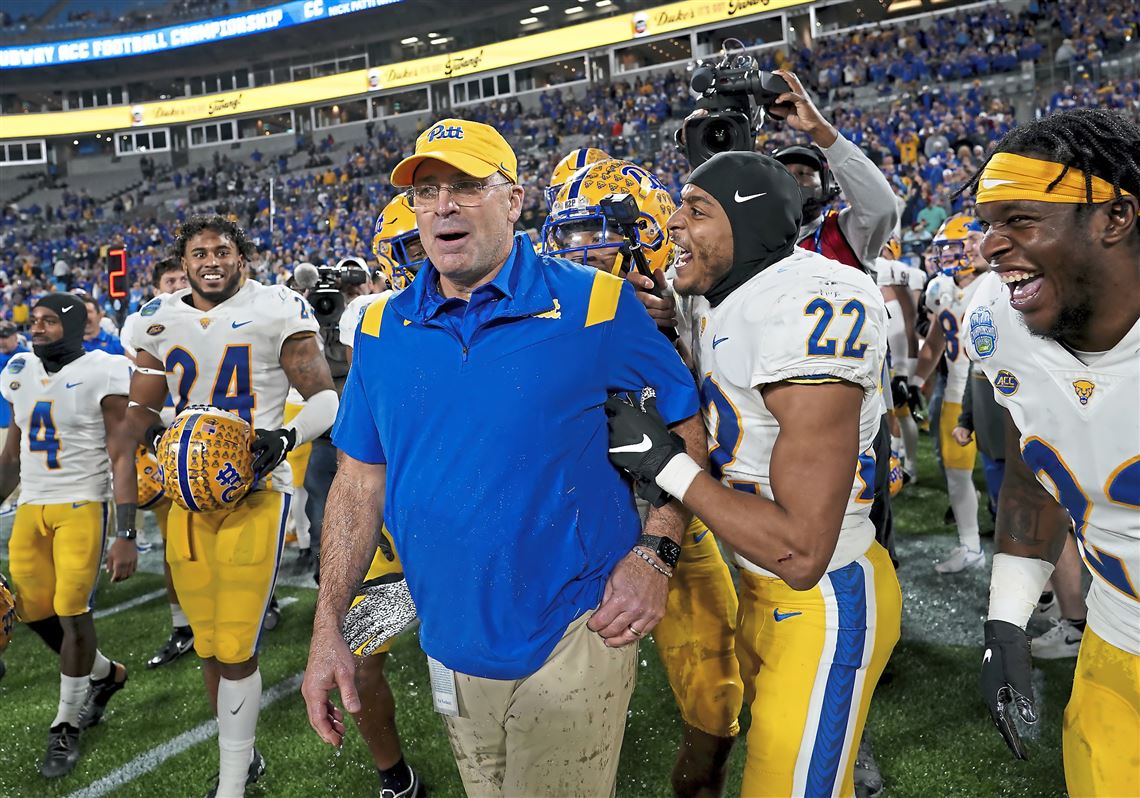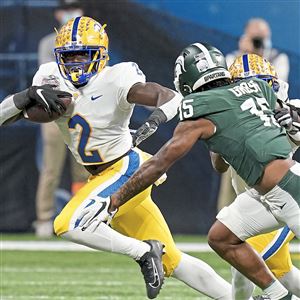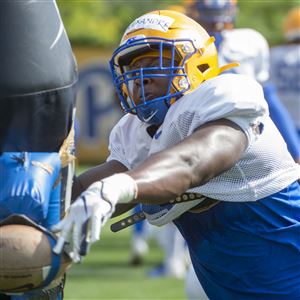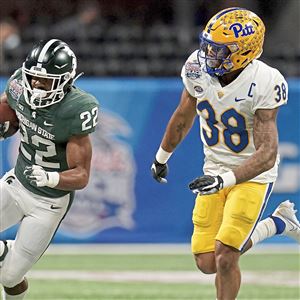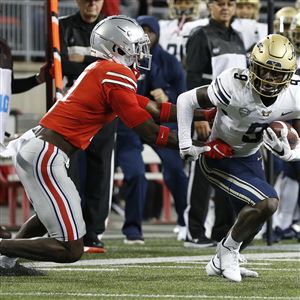Sometimes numbers don’t tell the full story. Stats don’t account for Pitt’s players-only meeting after the Western Michigan loss or the senior leadership that led it to an ACC championship. Percentages and decimal points can’t capture the intangibles that go into a season like the one the Panthers just had.
But stats, both traditional and advanced, are useful, especially now that Pitt’s historic campaign is over. The sample size is as big as it’s going to get. And 10 numbers in particular encapsulate the season Pat Narduzzi’s Panthers were able to pull off.
57th
Pitt’s strength of schedule (SOS), the second-easiest of Narduzzi’s seven-year tenure, according to ESPN’s Football Power Index. Acknowledging this off the bat feels appropriate. Most looked at Pitt’s schedule and saw opportunity. As it turned out, the Panthers didn’t play a ranked team until the ACC title game. Comparatively, Pitt played seven top-15 teams in the non-conference slate alone in 2015, 2017, 2018 and 2019. These Panthers had a more manageable schedule than just about every Pitt team Narduzzi has coached. And to their credit, they took advantage.
17.6
Pitt’s SP+ rating, which ranks ninth in the country. ESPN’s Bill Connelly created SP+ as a predictive tool that tracks overall team efficiency. It’s opponent-adjusted, and it looks at explosiveness, turnovers and other factors. Based on that season-long information, SP+ rates Pitt as 17.6 points better than the average college football team. It also suggests that only eight teams at season’s end — Georgia, Ohio State, Alabama, Michigan, Cincinnati, Texas A&M, Wisconsin and (interestingly) Clemson — should be favored over Pitt at a neutral site. Pitt had a great team in 2021, top to bottom.
92.3
Kenny Pickett’s Pro Football Focus passing grade, which ranked second to only Heisman Trophy winner Bryce Young. If it hasn’t already, let that sink in. In his fifth year, after starting off as an unheralded prospect, Pickett became one of the best players in college football. A lot of factors — many of which we’ll outline here — played into Pitt’s 2021 success. But nothing was as important as Pickett’s unexpected ascendance.
71.01%
Pitt’s red-zone touchdown conversion rate, which ranked 12th among Football Bowl Subdivision (FBS) teams. Everyone from Pickett to former offensive coordinator Mark Whipple emphasized in training camp the importance of improving the red-zone offense. Narduzzi even said at July’s ACC Kickoff that the Panthers wouldn’t settle for field goals after ranking 118th and 90th in red-zone touchdown conversion rate in 2019 and 2020. That confidence came to fruition, scoring 49 red-zone touchdowns — fewer than only Utah and Western Kentucky’s 52.
33
Jordan Addison’s number of receptions of 20-plus yards, more than any other FBS player. Impressively, 11 of those 33 catches went for touchdowns. Addison was the most explosive receiver in the FBS, elevating Pitt’s 2021 offense (41.4 points per game, 486.6 yards per game) to become the most prolific in program history. Addison’s Biletnikoff Award was well-earned.
52.7%
Pitt’s “opportunity rate,” the percentage of carries that gain four yards or more when at least four yards are available, according to Football Outsiders. Pitt’s 52.7% clip ranked 24th in the FBS. And while that doesn’t seem outstanding, consider that the Panthers’ opportunity rate in 2020 (44.1%) ranked 96th. Better blocking combined with Israel Abanikanda, Vincent Davis and Rodney Hammond’s ability to get tough yards gave Pitt a functional running game for the first time since 2018. Without it, the Panthers might not have closed out key wins against Tennessee and Clemson.
3.19 seconds
Pickett’s average time to throw, which ranked second among the 71 quarterbacks with at least 350 drop-backs, according to PFF. A part of that was a senior-laden offensive line that allowed 31 sacks on Pickett’s 581 drop-backs (fourth-most in the FBS). And a part of that was Pickett’s ability to avoid pressure, extend plays and find receivers downfield. Pickett threw 10 touchdowns under pressure, third-most nationally.
54
Pitt’s sack total, which ranks second in the FBS. The Panthers could be passed by Alabama (52) in the national title game. But even then, Pitt will have finished top-three in sacks for a third season in a row. Props to Calijah Kancey, Habakkuk Baldonado and company, who were relentless in the backfield. Credit, as well, to defensive line coach Charlie Partridge and coordinator Randy Bates. Pitt had five sacks in seven games this year, including crucial wins over Tennessee, North Carolina, Virginia and Wake Forest.
45.8%
Pitt’s defensive “power success rate,” the percentage of runs on third or fourth down with 2 yards or fewer to go that achieved a first down or touchdown. Pitt’s figure, according to Football Outsiders, ranked third in the FBS. So, Pitt’s defense created havoc in the passing game and was stout against the run. Quite a combo.
28%
Pitt’s fourth-down conversion rate allowed, the third-best rate in the FBS. In Narduzzi’s first six seasons, Pitt allowed conversions on 57.4% of fourth-down tries. That’s below average. But in 2021, Pitt’s defense thrived in those game-altering moments, allowing conversions on only 7 of 25 attempts. Of course, three conversions doomed Pitt in its Peach Bowl loss to Michigan State. But an 18.6% clip (3 of 16) in ACC play helped Pitt wear the conference crown. That’s what ultimately matters.
Johnny McGonigal: jmcgonigal@post-gazette.com and Twitter @jmcgonigal9
First Published: January 6, 2022, 11:00 a.m.
Updated: January 6, 2022, 11:10 a.m.



